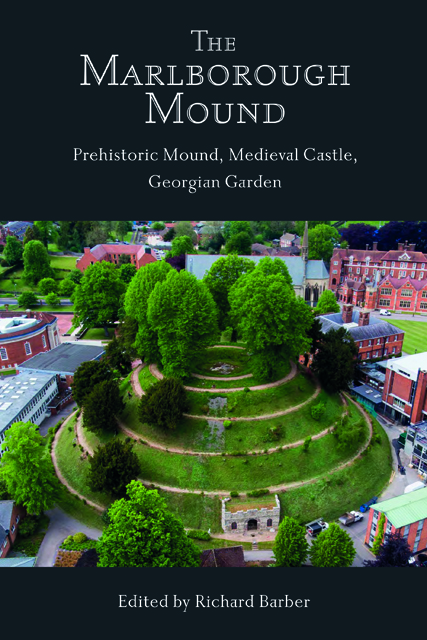Book contents
- Frontmatter
- Contents
- List of Figures
- Acknowledgements
- Preface
- 1 ‘One remarkable earthen-work’: The Neolithic Origins of the Marlborough Mound
- Afterword: The Round Mounds Project
- 2 Castles and the Landscape of Norman Wessex, c. 1066–1154
- 3 Marlborough Castle in the Middle Ages
- 4 The Mound as a Garden Feature
- Epilogue: The Marlborough Mound Trust
- A Inquisition into the State of Marlborough Castle, 11 September 1327
- B Castellum Merlebergensis, by H. C. Brentnall, F.S.A.
- C Constables of Marlborough Castle
- D Marlborough Castle: Archaeological Findings for the Medieval Period
- Bibliography
- Notes
- Contributors
- Index
Afterword: The Round Mounds Project
Published online by Cambridge University Press: 11 January 2023
- Frontmatter
- Contents
- List of Figures
- Acknowledgements
- Preface
- 1 ‘One remarkable earthen-work’: The Neolithic Origins of the Marlborough Mound
- Afterword: The Round Mounds Project
- 2 Castles and the Landscape of Norman Wessex, c. 1066–1154
- 3 Marlborough Castle in the Middle Ages
- 4 The Mound as a Garden Feature
- Epilogue: The Marlborough Mound Trust
- A Inquisition into the State of Marlborough Castle, 11 September 1327
- B Castellum Merlebergensis, by H. C. Brentnall, F.S.A.
- C Constables of Marlborough Castle
- D Marlborough Castle: Archaeological Findings for the Medieval Period
- Bibliography
- Notes
- Contributors
- Index
Summary
The obvious question that arises from the dating work at the Marlborough Mound is: how many other ‘Norman’ mottes up and down the country were also constructed in the prehistoric period? Their supposed medieval date is actually largely speculation – an idea put forward in the early twentieth century by castle scholars like Ella Armitage – when in fact no-one has ever attempted to date castle mounds archaeologically; they are too large to excavate and too expensive to tunnel into, not to mention the damage work like this would cause to the sites themselves. Seen in this light, could other large prehistoric monumental mounds exist, fossilised as later medieval mottes? Can we at least put rough dates on these huge and much-loved monuments?
In order to answer these questions a project, known as the Round Mounds Project and funded by the Leverhulme Trust, was set up. This was a two-anda- half-year initiative with one simple central aim: to identify mottes in England with prehistoric potential and, through a programme of targeted, minimally intrusive investigation, determine their date of construction, how they developed, and the environmental context in which they were built.
Funding to investigate twenty mottes across England was provided, so careful research and a detailed review of existing information related to castle mottes, examining national data sets, published works, grey-literature reports and topographic data, was undertaken first. Key search criteria were developed using information from Silbury Hill, the Hatfield Barrow and the Marlborough Mound, and included each monument’s scale, topographic setting, relationship to known monuments and other archaeological evidence. From nearly nine hundred mottes or motte-and-bailey castles recorded on the Historic England NRHE (National Record of the Historic Environment), a database of 154 mounds with prehistoric potential was created and, from these, forty-six were shortlisted for field reconnaissance.
This second phase involved visiting each shortlisted site to assess the mound in its landscape context. The prehistoric potential of each mound was evaluated, as well as the fieldwork strategy and site logistics that would be involved in investigating it further, along with compiling photographs, details of any previous archaeological investigations and local geological data. This provided huge amounts of new information to add to the project and, based on these details, twenty were selected.
- Type
- Chapter
- Information
- The Marlborough MoundPrehistoric Mound, Medieval Castle, Georgian Garden, pp. 19 - 24Publisher: Boydell & BrewerPrint publication year: 2022

